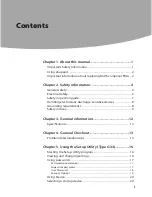
P
PALcode
See Privileged architecture library code
Parallel port, 1–5, 7–2
connecting a peripheral, 7–6
location and description, 1–8
PC/AT-standard interface
diskette drives, 1–5
RX26 diskette drive, 1–12
Peripheral
connecting to parallel port, 7–6
connecting to serial port, 7–4
Ports
back panel, 1–8
connecting to external ports, 7–1
parallel, 7–2
parallel port, 1–5
serial, 7–2
serial port, 1–5
Power input connector
location and description, 1–8
Power output connector
location and description, 1–8
Power supplies
See also SPS
drive support, 1–16
options, 1–16
ordering, 1–16
Power-up
normal process, 2–10
Power-up tests
differences between pass and fail, 2–12
OpenVMS and OSF/1 console, 2–12
system, 2–10
tests that fail, 2–12
tests that pass, 2–12
Windows NT firmware, 2–12
Printer port
See Parallel port
Privileged architecture library code, 1–2
Q
QIC tape drive
controls and LED, 5–6
description, 5–6
dual-color LED function, 5–8, 5–10
dual-color LED location, 5–6
eject button function, 5–8, 5–10
eject button location, 5–6
inserting a QIC tape, 5–8
removing a QIC tape, 5–10
troubleshooting information, 5–6
TZK10, 1–12
TZK11, 1–12
QIC tapes
compatibility with TZK10, 6–2
compatibility with TZK11, 6–2
handling and storing, 6–3
inserting into a QIC tape drive, 5–8
removing from a QIC tape drive, 5–10
types, 6–2
uses, 5–6
write-protect switch positions, 6–4
write-protection, 6–4
Quarter-inch cartridge tapes
See QIC tapes
R
Related documents, A–2
Removable media devices
accessing, 2–18
RRD42
See CD-ROM drive
Run state
description, 3–6
switching to, 3–6
Run/standby key
function, 3–2
location on IFP, 3–2
using, 3–6
Run/standby LED
function, 3–2
location, 3–2
Index–7




































